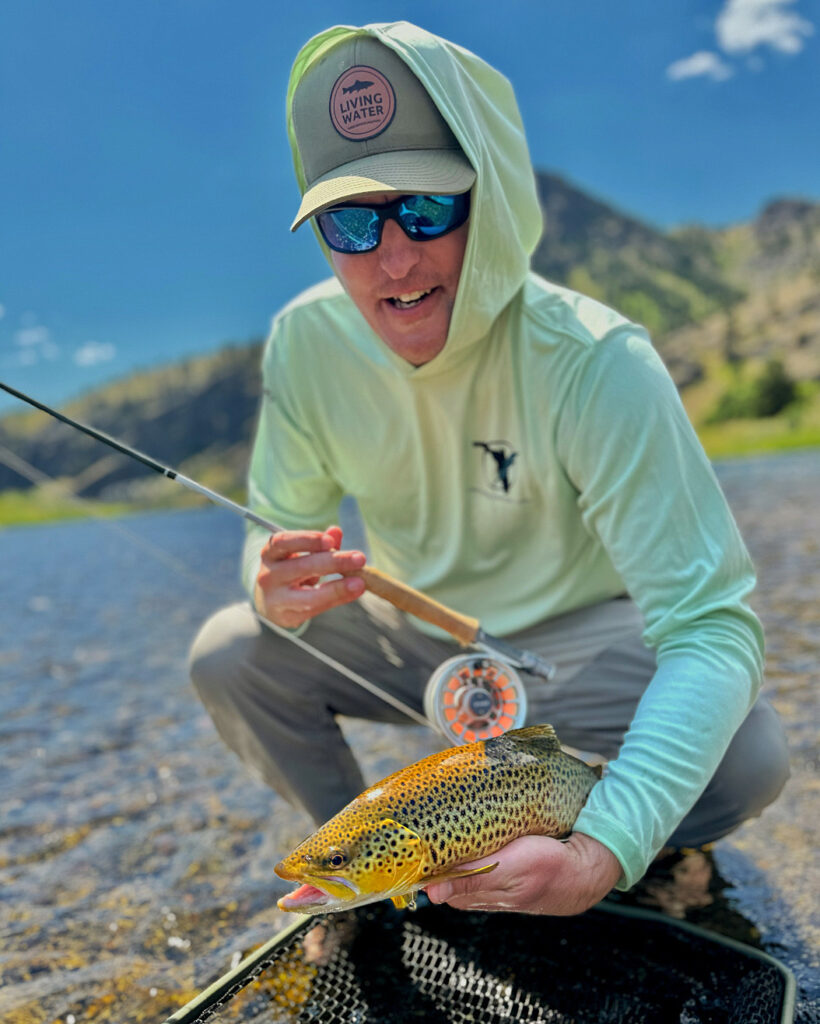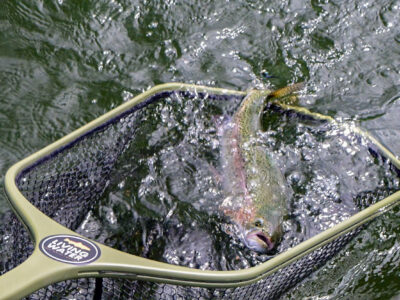Montana, renowned for its incredible rivers and abundant trout, attracts anglers from all over the world. However, with increasing temperatures and lower water levels, trout face significant stress, and the responsibility falls on anglers, guides and outfitters to adopt practices that ensure the sustainability and health of these cherished fish. Below are some key considerations for fly fishing in Montana during warm water periods and how to minimize impact on trout populations.
Understanding Trout Stress in Warm Water
Trout are cold-water fish, thriving in temperatures between 50°F and 60°F (10°C and 15.5°C). When water temperatures rise above 68°F (20°C), trout begin to experience stress. This stress can have negative impacts on their overall health and well-being. One of the immediate effects of increased water temperature is a decrease in feeding behavior. Trout may become less active and less likely to pursue prey, leading to a decrease in their overall food intake. The stress caused by high water temperatures can also result in slower growth rates. This is because their energy is shifted towards dealing with the stress rather than growth and development. As a result, trout may not reach their full potential when exposed to warmer water for long periods of time. Stress weakens the immune system of the fish, making them more vulnerable to infections and illnesses. This can have devastating effects on our trout populations, especially in areas where water temperatures regularly exceed the optimal range.
Key Considerations for Conservation-Minded Fly Fishing
- Monitor Water Temperatures:
- Carry a reliable stream thermometer and check water temperatures regularly.
- STOP fishing when water temperatures reach 68°F (20°C) or higher to avoid stressing the trout.
- Fish Early or Late:
- Fish during the cooler parts of the day, typically early morning and late evening.
- Avoid fishing during the hottest parts of the day when water temperatures peak.
- Choose Cooler Waters:
- Seek out higher elevation streams, alpine lakes, spring-fed creeks, or shaded areas where water remains cooler.
- Target larger rivers with deeper pools that maintain more stable temperatures.
- Use Appropriate Gear:
- Use barbless hooks to reduce handling time and minimize injury to the fish.
- Employ heavier tippets to reduce the duration of the fight, allowing for a quicker release.
- Handle with Care:
- Wet your hands before handling fish to protect their delicate slime coating.
- Minimize air exposure by keeping the fish in the water as much as possible during unhooking and photographing.
- Use a rubber or silicone net, which is gentler on the fish’s skin and fins.
- Limit Fishing Pressure:
- Rotate fishing locations to prevent overfishing in any single area. Especially in our small creeks and tributaries.
Be Observant and Adaptive:
- Be mindful of trout behavior; if fish are sluggish or showing signs of stress, cease fishing immediately.
- Adapt your fishing techniques and strategies based on current conditions to prioritize the well-being of the fish.

When to Stop Fishing
As a rule of thumb when fishing Montana, stop fishing when water temperatures consistently reach or exceed 68°F (20°C). During prolonged heat waves or drought conditions, consider giving the trout a break and explore alternative fishing opportunities, such as targeting warm-water species such as northern pike or carp. You can even leave the fly rods at home and enjoy the scenery and wildlife that Montana has to offer. Once water temperatures reach the low 70’s is when we see Montana FWP place hoot-owl restriction on a river.
Conclusion
Conservation-minded fly fishing is crucial for the sustainability of Montana’s trout populations, especially during periods of low and warm water. By monitoring water temperatures, adjusting fishing practices, and handling fish with care, anglers can play a significant role in protecting these valuable ecosystems. Remember, the health of our trout streams today ensures that future generations can enjoy the beauty and challenge of fly fishing in Montana’s treasured waters.


 Tips For Dry Fly Fishing the Missouri
Tips For Dry Fly Fishing the Missouri
Leave a Reply